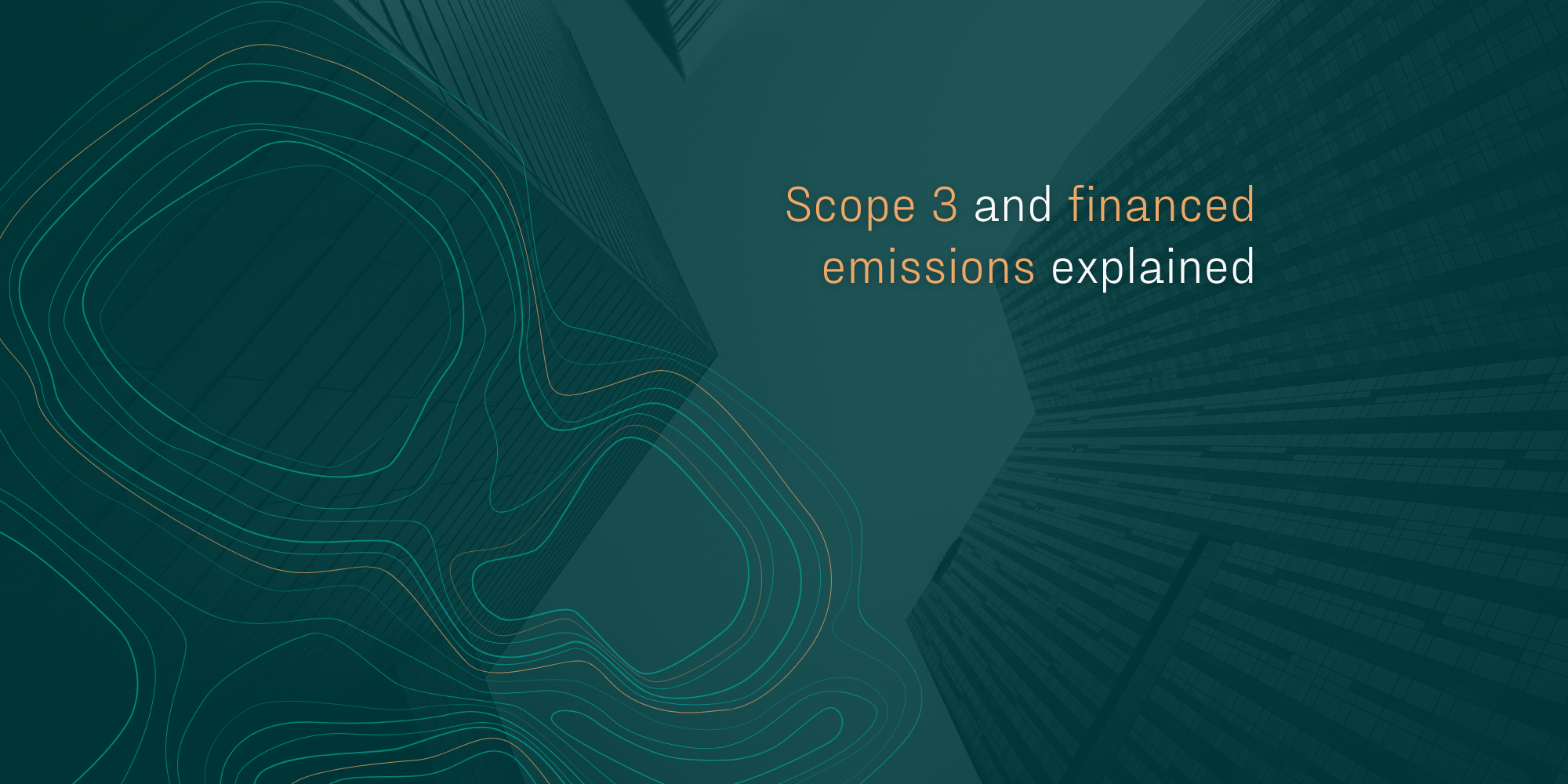Businesses are beginning to recognise the urgency in reducing their environmental impact. Whilst this recognition is important and a great first step, the larger question remains, how can businesses reduce their emissions in a way that is quick and effective?
One action with significant impact is the reduction of an organisation’s carbon footprint. When working towards this goal, organisations must first have a sufficient understanding of their footprint including emission sources and emission scopes. Effective corporate climate change strategy requires this understanding to fully incorporate all opportunities. To build better knowledge surrounding this area this article explores all things related to emissions scopes. Continue reading to learn more.
What are Scope 1, 2 & 3 emissions?
Undertaking the simplest of tasks, for example, liking a photo on LinkedIn, sending an email or purchasing Bitcoin, emits emissions into the atmosphere. With almost all business actions result in the release of greenhouse gas emissions, calculating an organisations total emissions inventory is often complex and confusing.
To minimise the difficulty associated with the measurement of a company’s total emissions, the Greenhouse Gas Protocol, the largest global supplier of greenhouse gas accounting standards, has categorised the various emission sources. Grouping emissions into three internationally recognised groups, known as scopes, organisations are able to better manage and monitor the sources of their environmental impact.
To learn more about the measurement process, read out previous blog - Why measure your carbon impact?
Scope 1
Scope 1 emissions are direct emissions which originate from operations that are either owned or controlled by a company. In other words, these are the emissions released as a direct result of the operational activities undertaken by the company.
Scope 1 emissions are sub-divided into four categories:
- Stationary combustion: Emissions released from all fuel combustion sources (e.g. combustion of diesel in a generator for electricity).
- Mobile combustion: Emissions released from the combustion of fuels in company owned or controlled mobile sources (e.g. combustion of gasoline in a company owned vehicle).
- Fugitive emissions: Emissions that are leaked or unintentionally released into the atmosphere (e.g. emissions from the production of natural gases, oil and coal as well as leaks from air conditioning units and refrigerators)
- Process emissions: - Emissions emitted during industrial processes from chemical transformation of raw materials and fugitive emissions (e.g. emissions from cement production).
Scope 2
Scope 2 emissions are indirect emissions that are from the generation of purchased or acquired electricity, steam, or heat. According to Greenhouse Gas Protocol, these emissions are classified as Scope 2 due to their indirect nature, where an organisation does not control the process to generate the electricity; rather this process occurs off-site. Scope 2 emissions are not a direct result of an organisations activities (scope 1), but are a consequence of the consumption of energy at a site owned or controlled by the business.
Scope 3
Scope 3 emissions are all emissions (not included in scope 1 or 2) that occur in the company's corporate value chain. Scope 3 emissions are split into 15 categories which are either upstream or downstream of the organisation's operations. According to Greenhouse Gas Protocol, these classifications intend to provide organisations with a ‘systematic framework to measure, manage and reduce emissions’ across their value chain. It is important to note that not all of the 15 categorises will be relevant to all organisations.
Pathzero understands this and has designed our calculator to recognise the emission sources which are applicable to a particular industry. Combining smart technology with industry expert knowledge and innovation capabilities, Pathzero provides one of the most efficient, simple and accurate full scope (Scope 1, 2 and 3) measurement tool available.
Listed below is the Greenhouse Gas Protocol's description of the 15 categories for scope 3 emissions sources.
Source: Greenhouse Gas Protocol - 'The Scope Three Standard'
How are the Scopes different?
All three scopes were designed by Greenhouse Gas Protocol to be mutually exclusive, eliminating the chance doubling-up emissions when measuring a total carbon footprint.
Scope 1 emissions are the easiest to both measure and monitor. If an organisation wishes to identify and undertake emission reduction opportunities, scope 1 emissions are generally the first place of focus. This is due to the direct nature of scope 1 emissions. All activities that an organisation chooses to conduct correlates with the total amount of scope 1 emissions the organisation emits. This is the major factor of difference between scope 1 and the other scopes.
Image source: GHG Protocol
Scope 1 emissions are easy to identify and measure, but what is the real difference between scope 2 and scope 3 emission sources?
Scope 2 emissions are purely from the consumption of energy that is generated off-site from an organisations operations. Scope 3 emissions however, occur in the corporate value chain, meaning the organisation has no direct control of these emissions. Although organisations do not have the direct ability to reduce these emissions, policies can be enacted to support emission reductions within this scope including within the supply chain.
Another major difference between the three emission scopes is whether they are required to be measured and reported. Previously, many organisations only reported on Scope 1 and 2 emissions as this was mandatory; however, including Scope 3 emissions is becoming common practice with Certification Programs such as Climate Active requiring this measurement.
At first this may make sense, as Scope 3 emissions are only those found along a corporate supply chain and therefore are not a direct result of business activities. However, in a report by CDP, it was revealed that on average 80% of a company’s total emissions are attributed to scope 3. In most cases, Scope 3 emissions represent the largest area of opportunity for emissions reduction, therefore measuring and reporting of Scope 3 emissions can provide great value.
Why measure all three scopes?
Measuring and reporting on a complete inventory (all three scopes) grants organisations with an overall understanding of their environmental impact. Whether the goal is to reduce your carbon footprint, to improve environmental performance, or improve cash flow and minimise business expenses, a complete inventory measurement brings forth a multitude of benefits. Learn more about these benefits in our previous blog - Why measure your carbon footprint?
Undergoing a full scope measurement is often associated with high costs, confusion and lengthy time periods. Whilst this can be common with some services, Pathzero was created with a purpose, to remove these barriers and allow organisations to act now. Manufacturing a smarter way to measure and report emissions, Pathzero is all about speed, simplicity and efficiency. Adhering to the principles of the Greenhouse Gas Protocol Corporate and Value Chain Standards, Pathzero ensures your organisation includes all the necessary emissions to produce a reputable and accurate measurement.
Each emissions scope has a differing impact on an organisation's total Greenhouse Gas emissions inventory. Understanding the distinction between the scopes is important as it enables the accurate measurement of emissions, and the ability to effectively identify emissions-related risks and reduction opportunities.
If this information is new to you or you wish to learn more before you take the next step, book a consultation with one of our friendly consultants today.
References:
[1] https://ghgprotocol.org/sites/default/files/standards/Scope3_Calculation_Guidance_0.pdf
[2] https://ghgprotocol.org/sites/default/files/standards/Corporate-Value-Chain-Accounting-Reporing-Standard_041613_2.pdf







